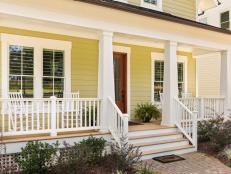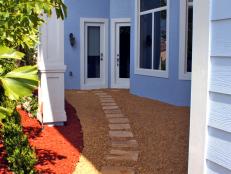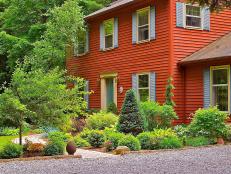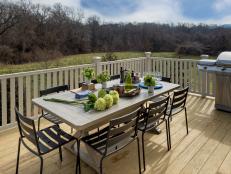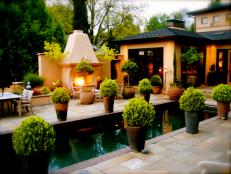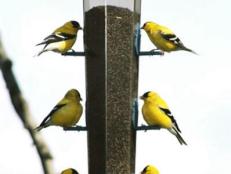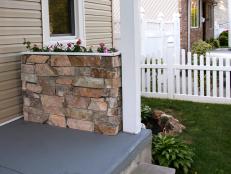How to Create an Outdoor Room
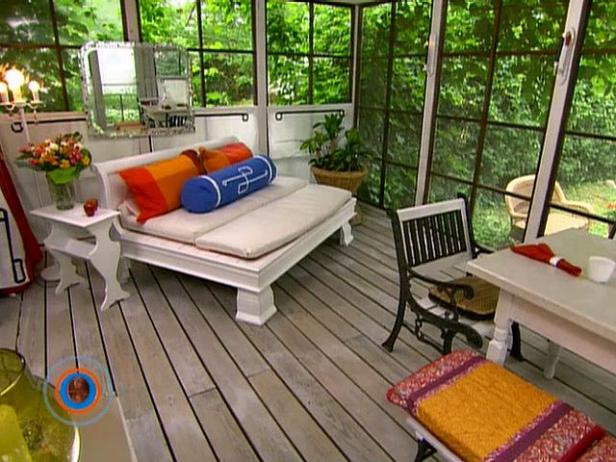
Whether you have a big backyard or a tiny patio, the key to designing for outdoor living is implementing your plan in steps, says Elyse Santoro, a Miami-based interior designer/decorator. "It doesn't have to happen all at once, and it doesn't have to be overwhelming or cost a fortune," she says. Start increasing your home's square footage today with our budget-friendly outdoor decorating tips.
Where to Put Your Outdoor Room
First, go inside your house and check out the views looking out. Placing the room in a good relationship to the house helps give the feeling that your outdoor room is "an extension of your home," Santoro says. "Make sure... you have easy access to get there," she says, whether or not it's physically connected to the house.
An outdoor room can include anything from an attached, screened-in porch to a gazebo to a landscaped area with a bench. If it's an independent area, such as a gazebo, create a passageway with foliage or hardscaping to visually connect it to the house. "You want to erase the fact that you've gone outside," says Atlanta-based landscape designer Patricia Thernell. She advises using the same flooring material outside as inside, or using plants to frame the doorway to your outdoor room.
Defining Your Outdoor Space
"The best way to define an outdoor room is by the activity that will take place in it," says Mary Donovan, an interior and landscape designer in Atlanta. Donovan interviews homeowners on what they plan to do in their outdoor spaces. Often the answer includes several purposes such as entertaining, family dining, playing games and reading. Figure out if you need one large space or several smaller rooms, each with its own purpose.
Multiple outdoor rooms don't necessarily require acres of land, Donovan says. Postage-stamp sized front lawns and narrow side yards can be landscaped to be rooms in themselves and not just passageways. "It can be a shady quiet, meandering space with hydrangeas, hostas, moss and a dripping wall fountain, and other plants trained to grow vertically up against the house or on a lattice," Donovan says.
An outdoor room has to be functional, but it also has to be engaging or you'll never use it. Santoro asks clients to think about places they've traveled to that they absolutely love. "If they say they love Tuscany or the vineyards in northern California, I ask them to remember what it felt like there and to create their outdoor space with elements of that place."
Decorating Your Outdoor Room
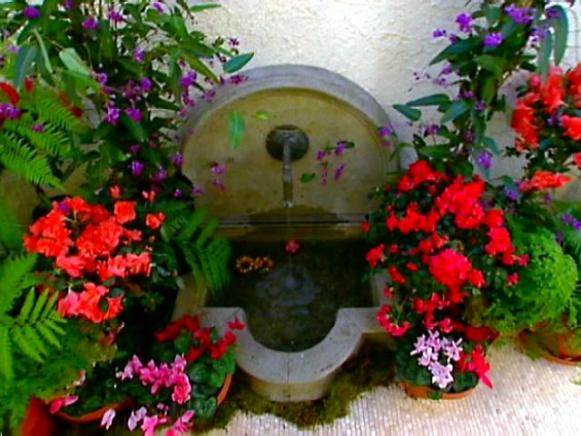
Water Features
Landscape designers, interior decorators and architects all agree: Water is one of the most important elements in an outdoor room. The sound of water "really creates a serene setting," says Thernell. Even if you're creating a room for entertaining and dining rather than meditating, "it's still nice to hear the splash when you're sitting around the table." But you don't have to spring for a pond or waterfall. A container water garden or a tabletop fountain works perfectly, says Santoro.
Flooring
Since flooring defines a space, put down some kind of hardscaping, whether it's a deck or a stone floor or a concrete slab. If your outdoor room has a floor of grass, "you'll never go out there," says Santoro. "If there's no floor it doesn't feel like a room." Concrete flooring can be stamped to resemble flagstone or brick, or stained in myriad colors. Plus, it's less expensive than a stone floor.
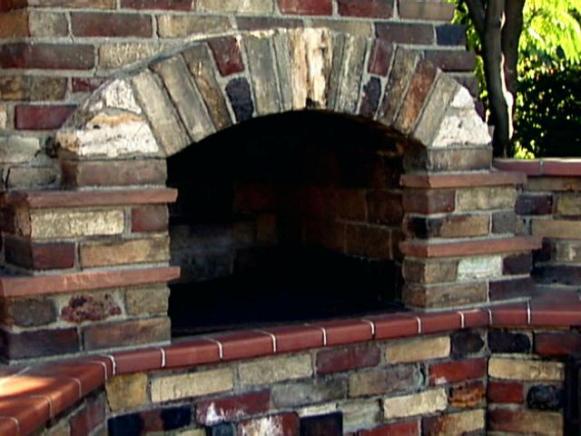
Fireplaces
A cozy fire or fireplace is becoming a staple for outdoor rooms, because a hearth can extend the season of your outdoor room by several months. Consider two-sided fireplaces or portable fire pits.
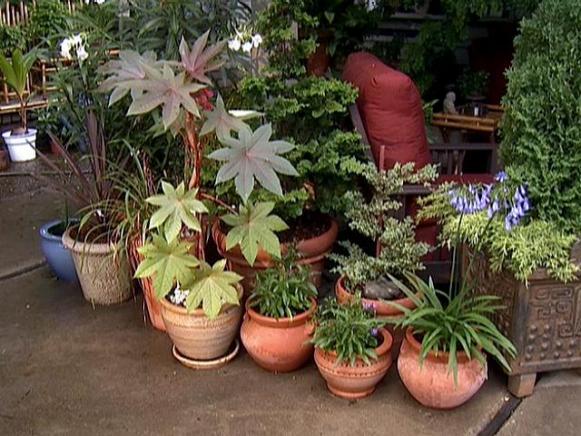
Plants
Plants soften hard edges (such as concrete flooring) and add a sense of life, warmth and comfort. Santoro, who's also an expert in feng shui, likes jade plants, miniature orange trees and potted philodendron in sheltered areas, and pines and bamboo to define outdoor areas. Or, choose plants based on the feelings you want to evoke in the space. For example, a meditative outdoor room works best in shade, surrounded with ferns and hosta with ligustrum to define borders. Left to grow naturally, a ligustrum hedge looks woodsy and informal, or you can trim it to define a more formal outdoor room.
(Contributions by Kathy McCleary)







